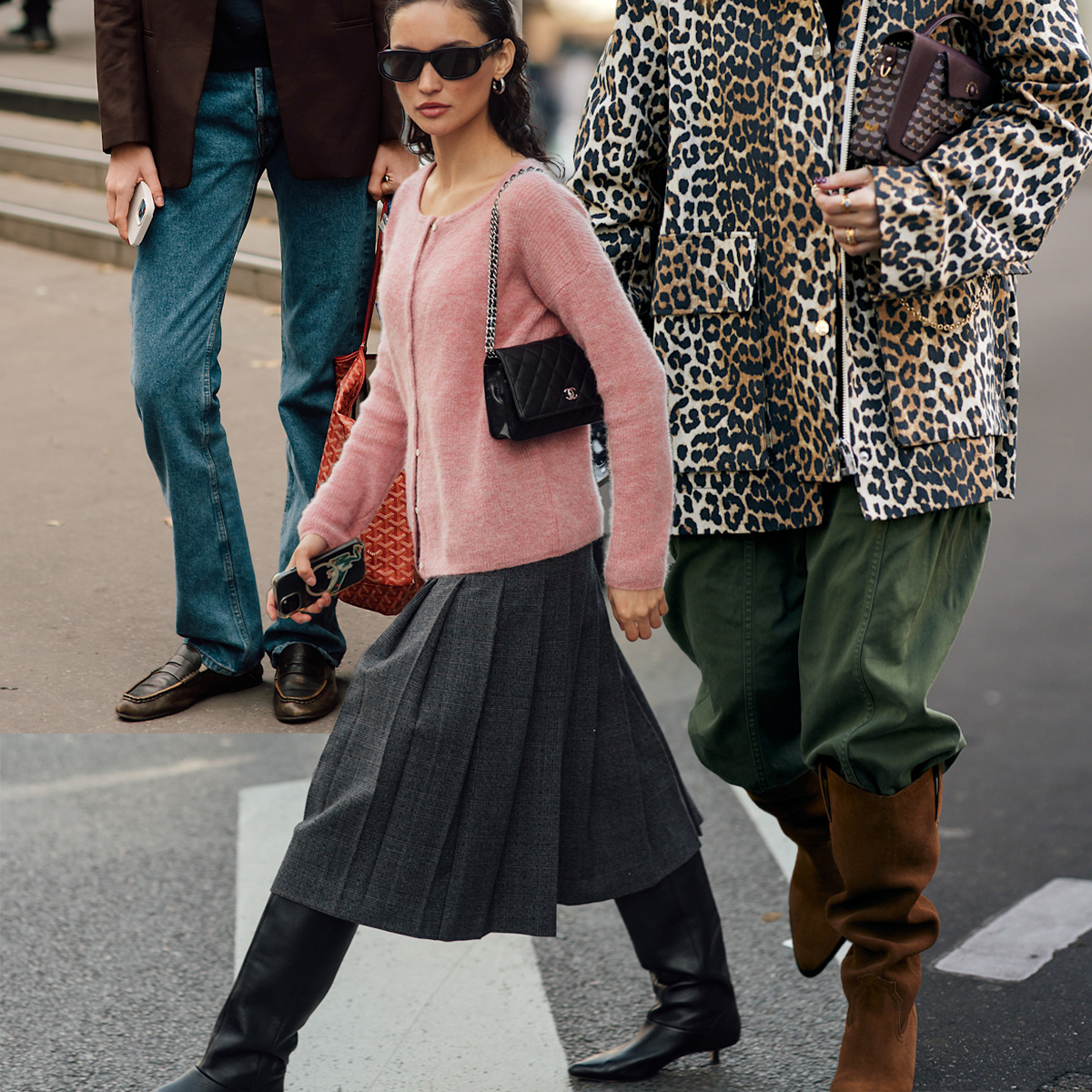A Step-by-Step Guide to Scoring Your Dream Pair of Vintage Levi's, According to an Expert
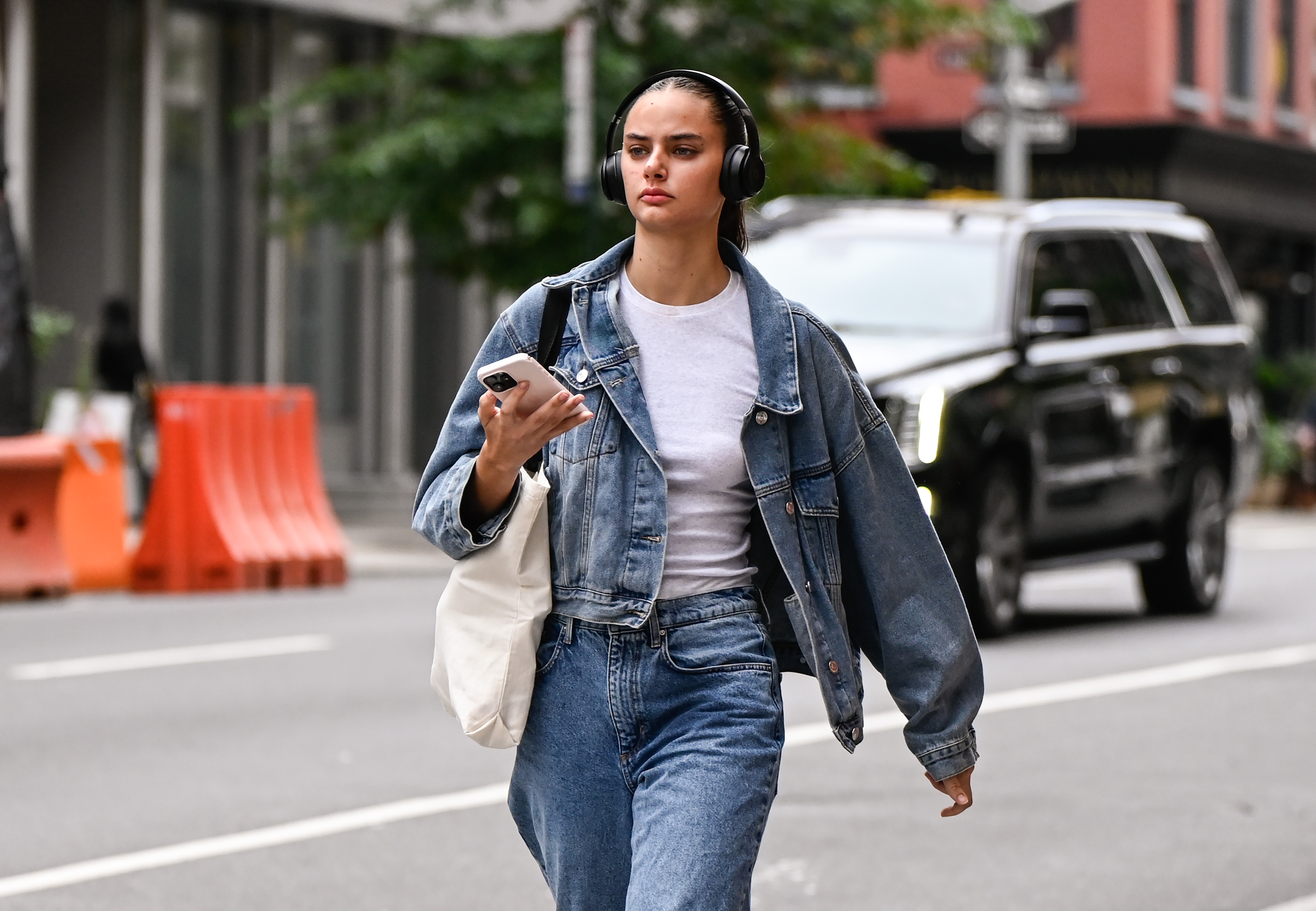
As a vintage-obsessed fashion editor, I pride myself on being able to find just about anything. A rare Stella McCartney–era Chloé top from 2001, also worn by Mariah Carey? The exact Moschino Cheap & Chic dress Jenna Rink wears at the end of 13 Going on 30? Any and every runway look from the 1992 Miu Miu show? I’ve got all of them bookmarked, saved, and mentally added to my cart. But vintage Levi’s jeans, arguably the most sought-after vintage item, have completely alluded me for years.
Vintage denim is really tricky because you can’t just look at a photo of a pair on eBay and decide that they’re the one. There are so many other factors at play. For years, I would longingly stare at photos of Alexa Chung in vintage jeans so perfect they looked molded onto her body and feel such pangs of intense envy.
After college, when I moved back home to New York City, I made a promise to myself that instead of looking at other people's jeans and wishing I had my own, I would go out and find a pair (or two… or three) that would induce jealousy in others. So, like anyone in pursuit of great vintage, I headed to Brooklyn, where all my coolest friends had found the vintage denim of their dreams.
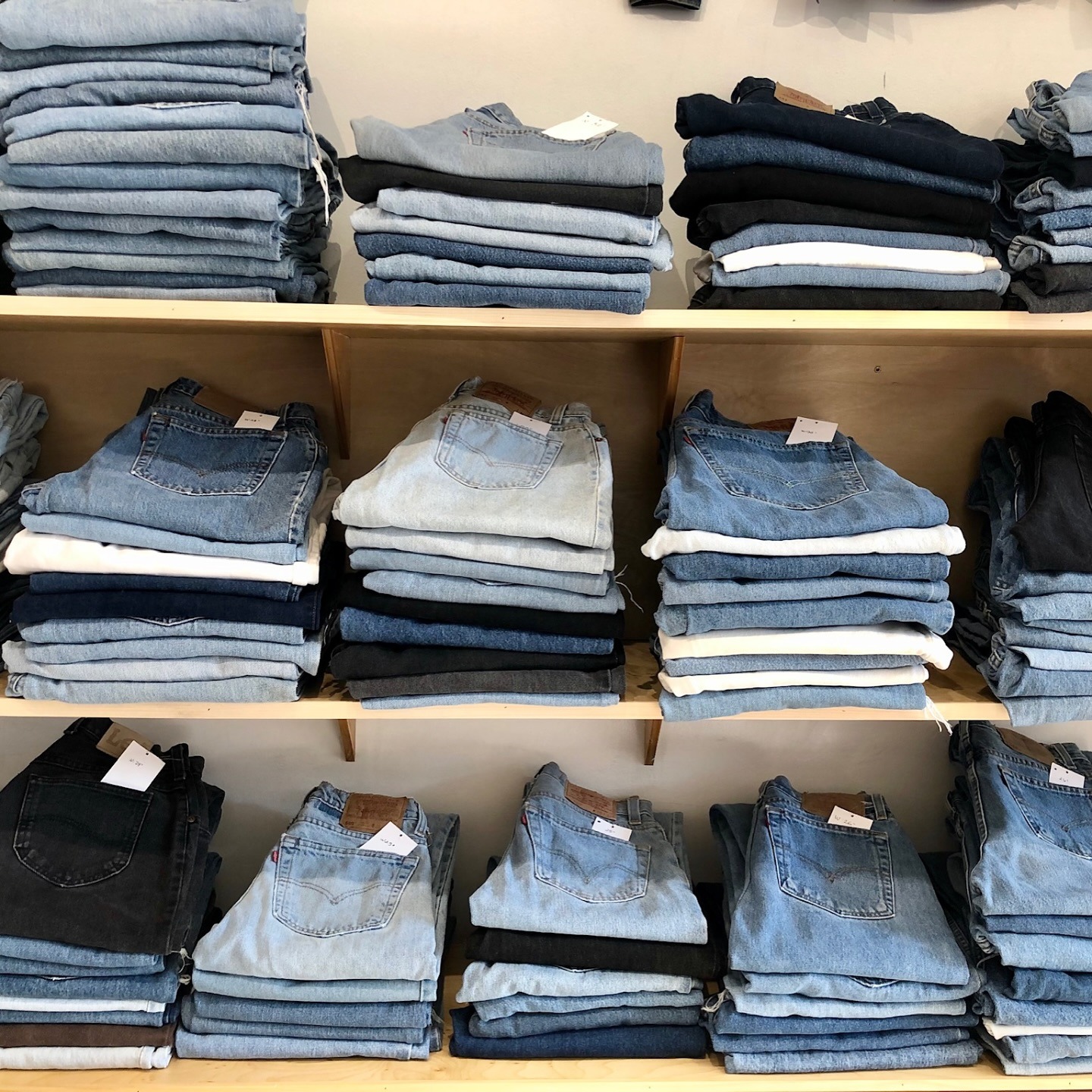
It was then that I stumbled upon Awoke Vintage, a shop founded by friends Liz Powerand Rachel Despeaux originally as a stall in Australia and then as a shop in Brooklyn in 2012, which has now turned into a handful. I remember first walking in and being extremely enamored (and slightly overwhelmed) by the wall of vintage jeans. Eventually, I tried a couple of pairs on and found a dream black pair of Levi’s from the ’90s that I still wear to this day. Now, I frequent the Awoke Vintage shops in Greenpoint on Franklin and near McCarren Park when I need a worn-in Levi’s fix.
But it’s always easier said than done, and I’m lucky enough to live close to a shop that knows how to source the best vintage jeans, so I don't have to. Founder Liz Power, though, has a wealth of knowledge about jeans and vintage, so I asked her for the very best tips and tricks.
Below is a guide on everything you need to know to find your perfect pair of vintage jeans, according to Powers—a true vintage expert who has tracked down thousands of dream pairs for the coolest girls in Brooklyn and beyond.
Shopping for vintage denim can be a really daunting process. Where would you recommend people start?
Start by giving yourself time, like, actually set aside an hour or two and be ready to try on 10 or more pairs. Vintage denim isn’t a quick in-and-out situation; it’s a treasure hunt. You might walk in thinking you’re a modern 30” waist, but the pair that makes you feel amazing could be labeled a 34”. Sizes shift across decades, so don’t shop the number, shop the fit. Grab a whole stack, head to the fitting room, and don’t be afraid to ask us for help!
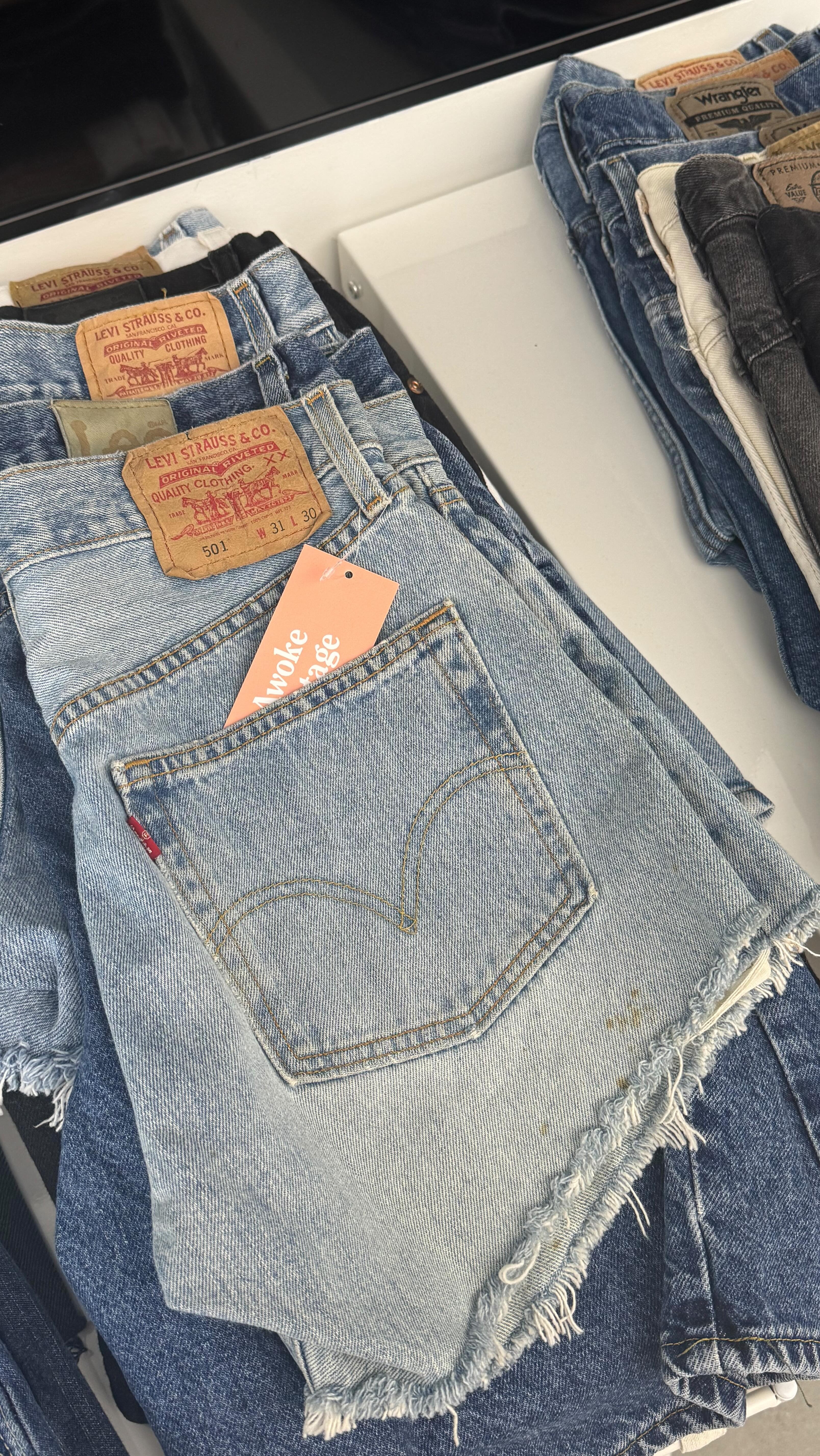
What are some rules of thumb when sourcing vintage denim?
Rule one? Never trust the tag size; it’s just a number from another era. Rule two: Check the details: the stitching, the rivets, even the zipper brand can tell you a lot about age and quality. And rule three: Don’t be scared of “imperfections.” A little wear, fading, or fraying usually means the jeans have lived a great life and are ready to keep going.
What are some characteristics you typically look for when sourcing jeans?
LP: Authenticity shows in the details: true vintage denim is usually mid- to heavyweight 100% cotton, with natural fading patterns and sturdy stitching. But what I really consider grails are unique signs of life. For example, one of my favorite personal pairs has a subtle worn-in mark on the back pocket from the previous owner’s tobacco pouch, a detail that makes them feel like one-of-one, with a history you can actually see.
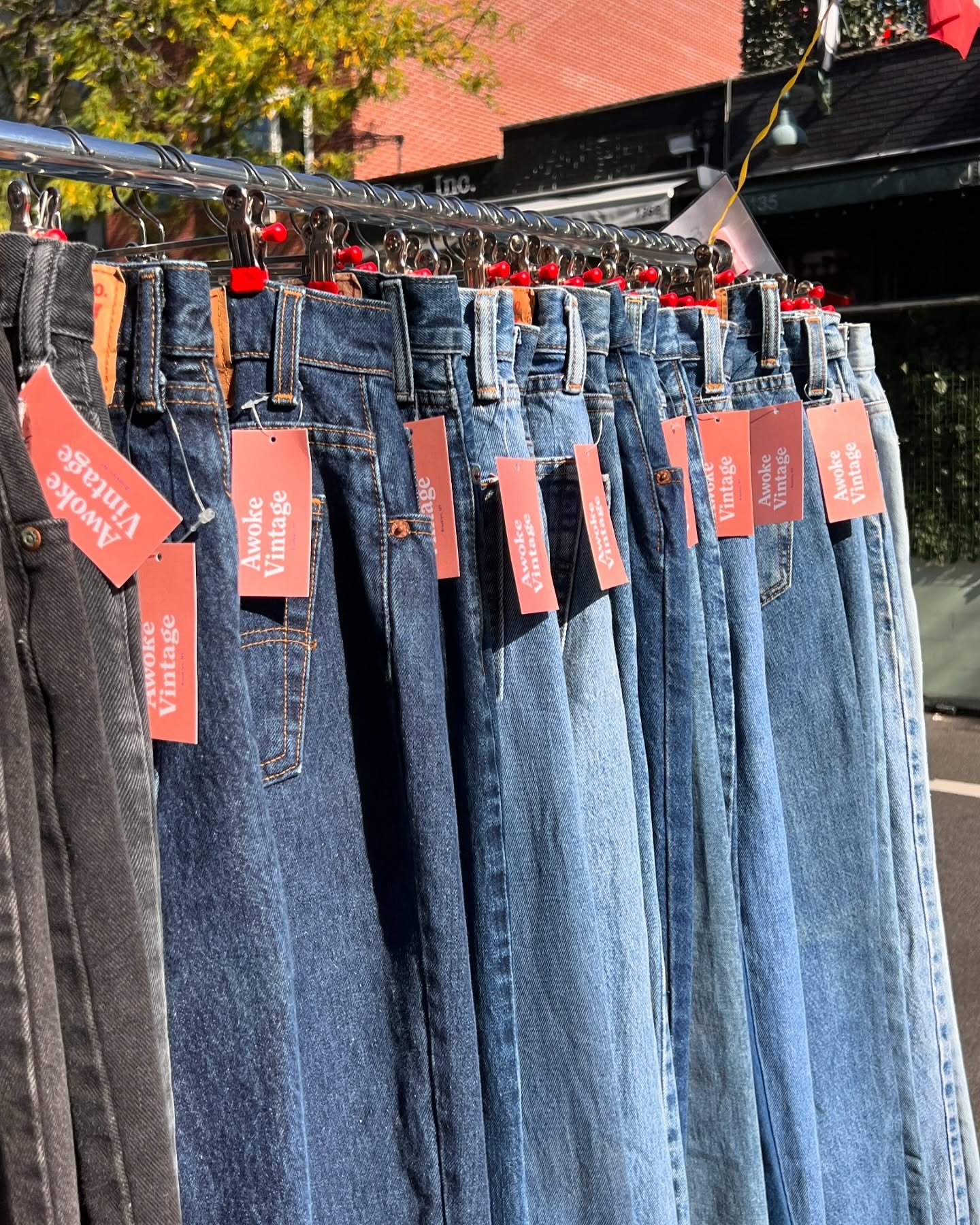
What are your favorite brands to look for? What about each of them do you like and why?
LP: Levi’s is the obvious classic, you can’t go wrong with vintage 517s or 505s. They’re timeless, versatile, and they get better with age. Lee jeans have this cool understated vibe and often feature great washes. Wrangler’s back pocket “W” stitch? Iconic. And lately, I’ve been loving finding old Calvin Klein and Guess denim, they give those 2000s supermodel vibes.
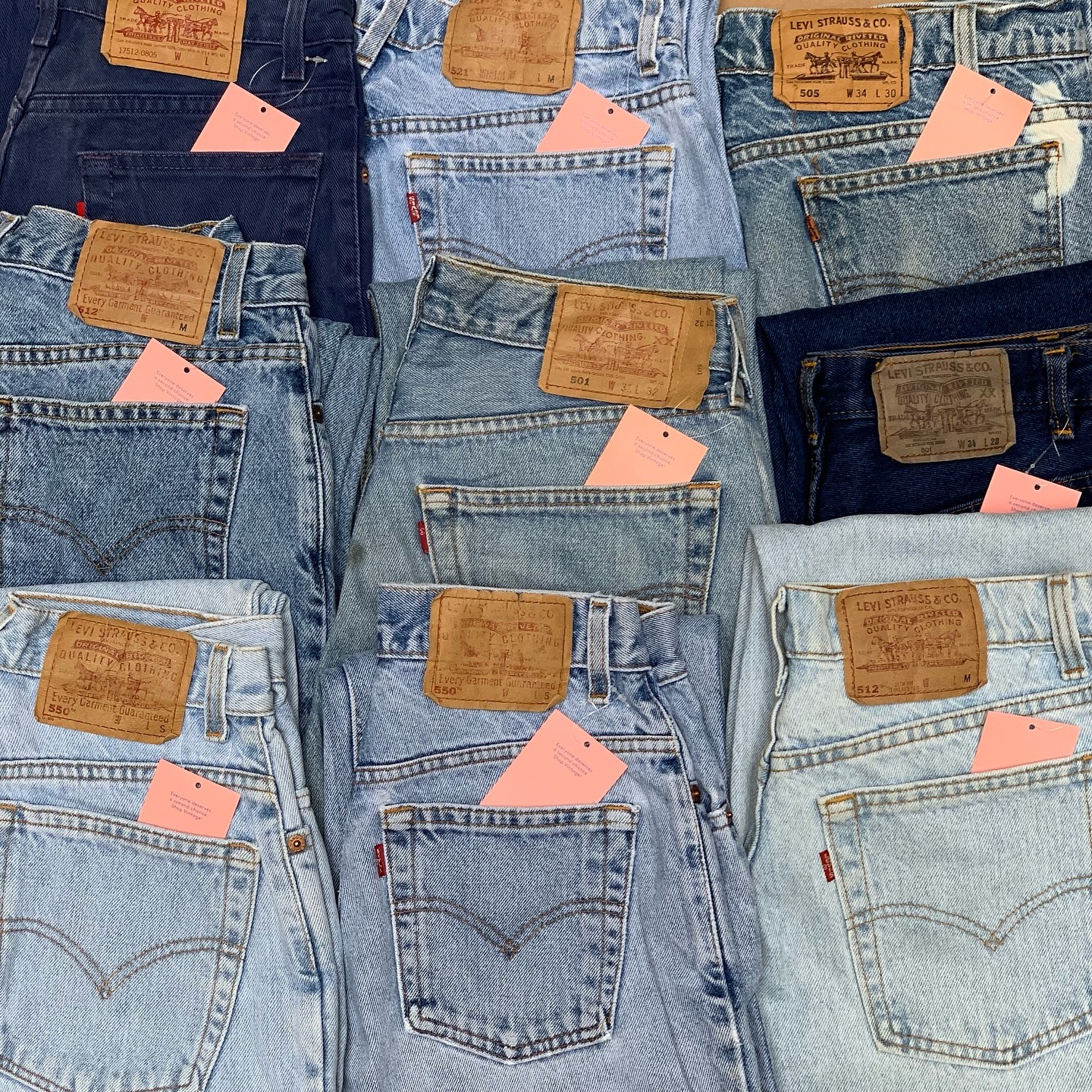
Do you have any secrets to finding the perfect fit?
LP: Don’t be afraid to break up with your “usual size.” Vintage denim doesn’t play by modern sizing rules. Bring a few different sizes into the fitting room, and try things you’d normally walk past. Another trick: measure your favorite pair of jeans at home (waist flat, rise, inseam) and keep those numbers in your phone. It’s like having a denim cheat sheet in your pocket.
What is something you think people would find surprising about vintage jeans?
LP: A Levi’s expert (who I cannot name!) once told me that the magic of “made in USA” vintage jeans wasn’t just the higher-quality cotton—it was the water. The mineral makeup of U.S. water used in denim processing gave the fabric a higher quality finish, which is why those jeans aged so beautifully compared to most modern pairs that are made internationally.
Even if two pairs are labeled the same, say a Levi’s 512, they can fit completely differently depending on when they were made. One insider trick: flip the back tag over. It actually lists the month and year of manufacture, which means if you find a pair you love, you can track down other jeans from that exact era for a similar fit.
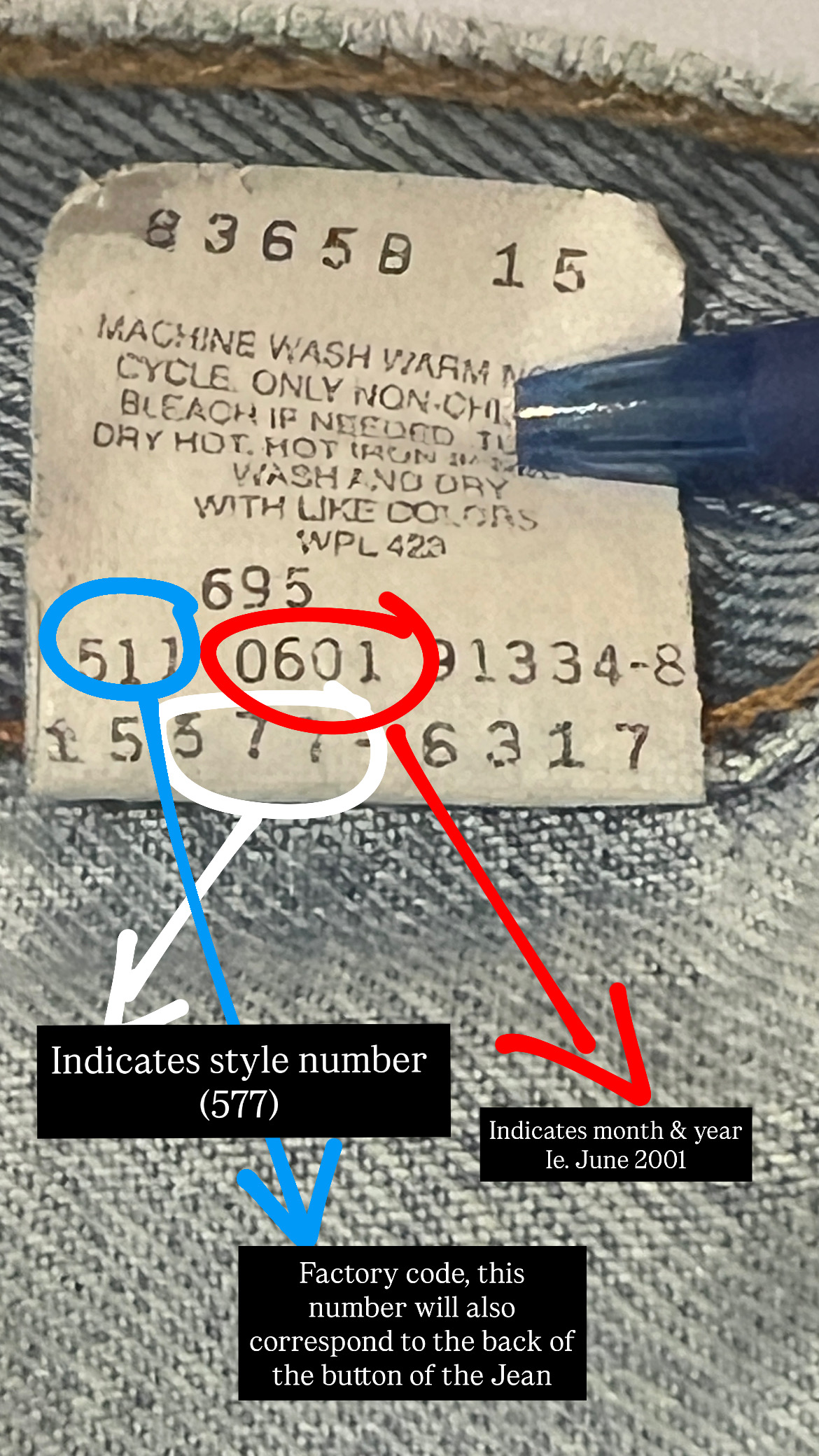
A diagram provided by Powers that explains the intricacies of an old Levi's tag.
What is the appeal of a nice pair of worn-in jeans vs. a brand new pair?
LP: Worn-in jeans just have soul. They mold to your body in a way that new jeans wish they could. The fades, the softness, the fact that they’ve already done the hard yards for you… It’s like slipping into something that feels instantly “yours.” New jeans? They’re fine, but they don’t quite have the lived-in magic.
And then there are all the little historical treasures you get with vintage, like finding an old movie stub from the ’90s in the pocket, or spotting an alteration someone made decades ago that happens to make the fit just right for you today. Every mark, fade, and quirk tells a story, and when you wear them, you’re adding your own chapter.

